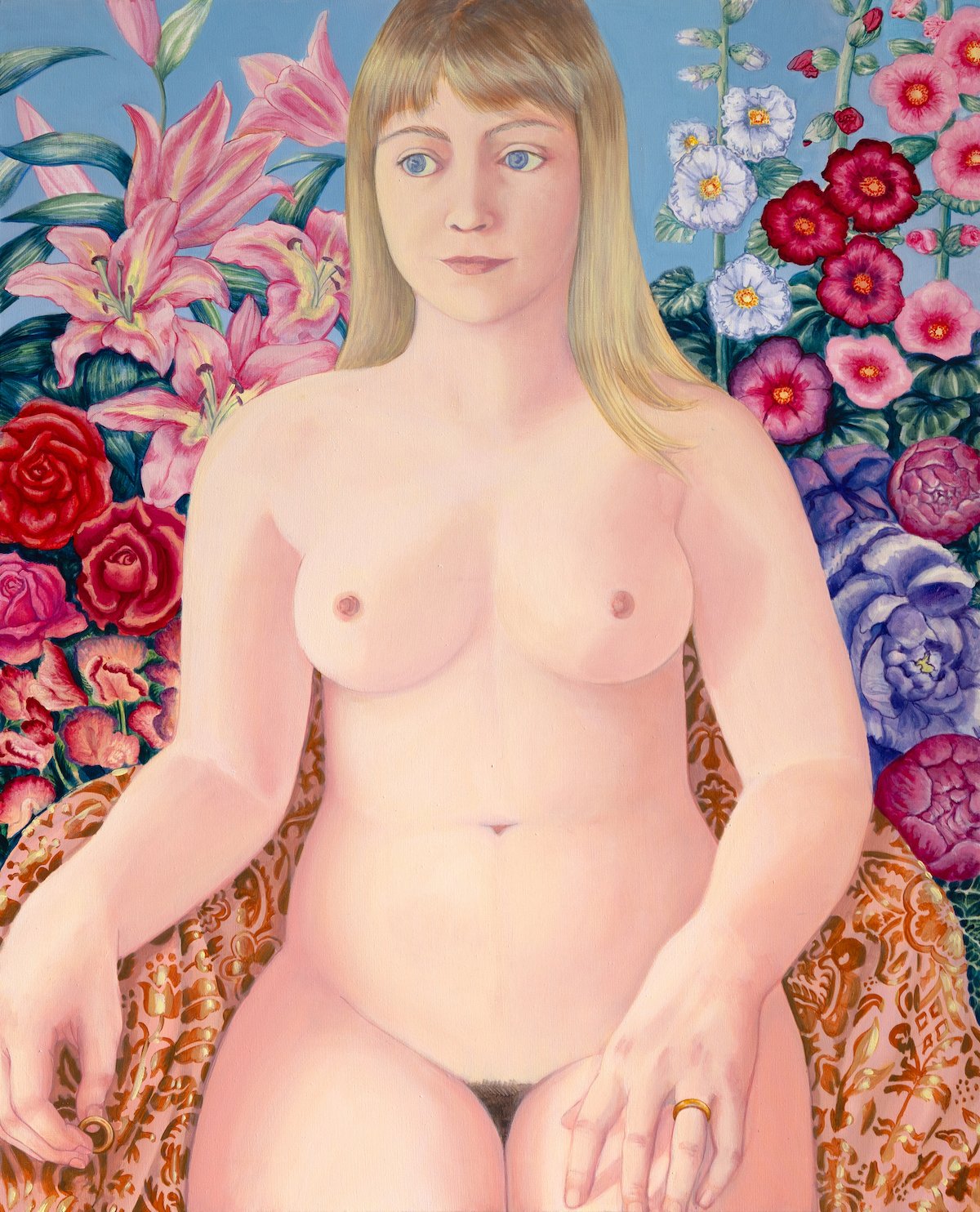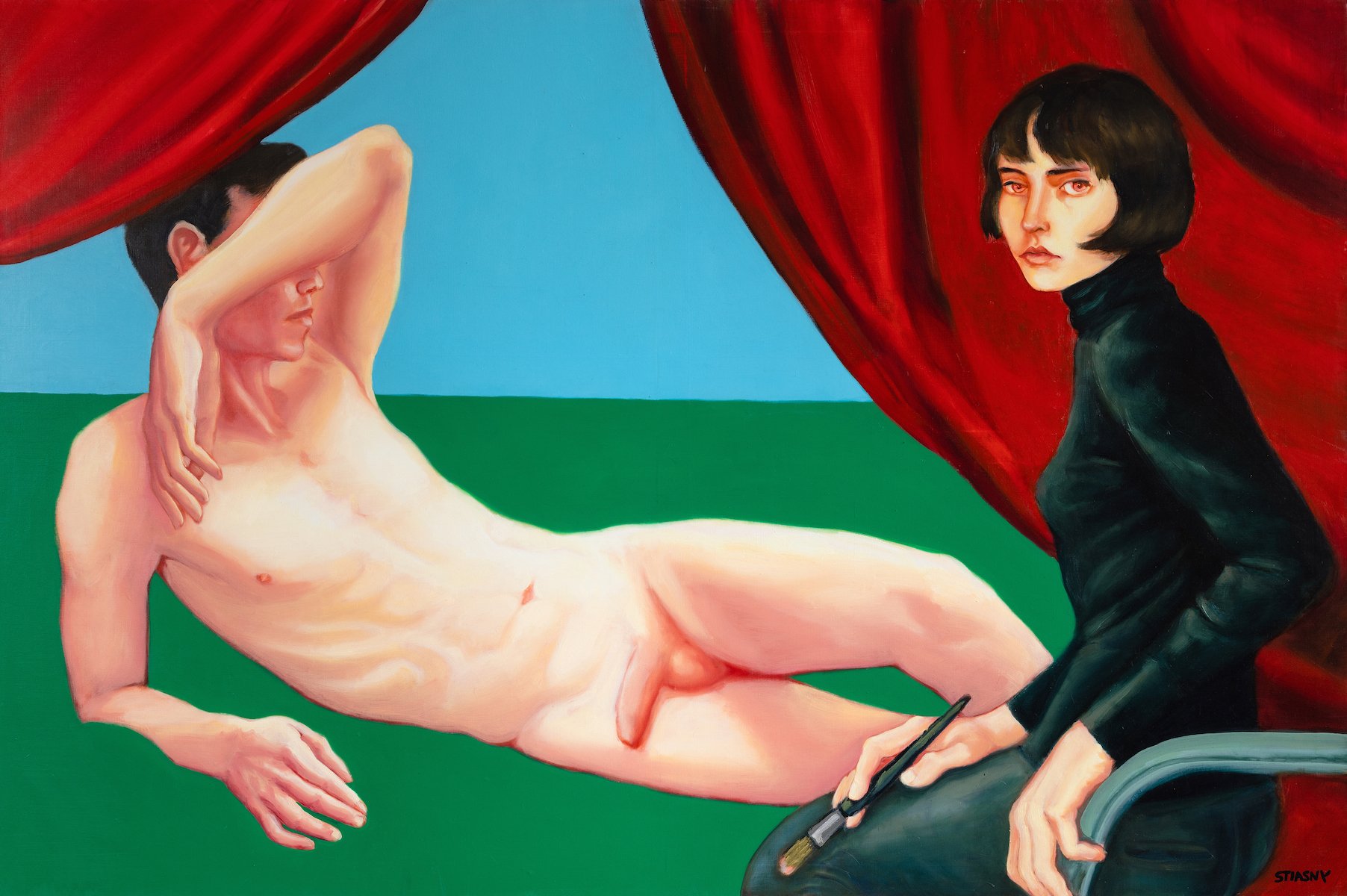
GirlChild
9th December - 13th January 2023/4
Helena Stiasny
Curated by Elaine ML Tam
Who, or what, is the ‘girlchild’? She is an issue of feminism, the victim of misogyny, an instance of culture, the fiction of women, the dysphoria of gender. But she is neither fixed archetype nor identifiable personage, insofar as the girlchild exhausts definition with infinite forms and affects. If one thing is certain, it is her impossible youth that characterises her; the surplus of this impossibility is underscored by the excessive, tautological portmanteau of the term. Made consumable fantasy, the girlchild speaks to the insatiability of desire and an etiolation of unfulfilled longing, wherein her innocence is manifest perversion. Abducted by every aspect of culture, the girlchild is at once a standard, an aesthetic and an idealisation, though her presence is most palpable in the negative – in the moments transgressed – where her perfection is de-realised and double-crossed. Bringing together a selection of recent paintings and works on paper, Helen Stiasny’s first solo exhibition in London is a love letter to the evanescent figure of the girlchild.
‘Often, before her decay has become too obvious, the Young-Girl gets married. The Young-Girl is only good for consuming, pleasure or work, it doesn’t matter.’
– Tiqqun, Preliminary Materials for a Theory of the Young-Girl, 2012
Helena Stiasny
Bridesmaid I 2022
oil on canvas
40 x 30 cm
Helena Stiasny
Bridesmaid II 2022
oil on canvas
40 x 30 cm
The best day of your life started with an episode of inane drama, a memory to which we are still strangely attached. Yes, the tantrum, I amply warned the others, was to be expected. Spring water pupils dilated with the terror of a murder witness, yours was the putrefaction of roses, the spread of an inexplicable pain slipping out from under your skin-matched foundation. Your first thought, you later confessed, had something to do with waterproof mascara and fake eyelashes. These kinds of de- tails are still lost on me and include the fine difference between synthetic and mink. Clumsy example of bridal group tribalism though I am, you stick with me for other reasons. With mirrored fondness we refer to ours as sisterhood, a commitment signed in imaginary blood.
In response to this script of emotions, the bridesmaids huddled around you, a soft flock crowding in with hair extensions honey, sand and ash. Among blooms of blonds from the encrypted world of feminine charm, with double-barrelled names after flowers, there I was... the weed, the brunette. Between the cooing and chord-warbling falsetto, your clouded face lifted, fat dewdrops in remission. I know this process too well: the gradations by which fatalistic sadness leaves your glacial beauty. How you wash ashore and, for a split second, are left sober, as vulnerable as an orphaned child. Resetting, you don that candied smile I have known all my life, resolute in sugar and glass, a crystallisation of sweet emptiness. We hugged you and made jest, because when you laugh, however falsely, everything within a five-meter radius is beams of sunlight and liquefied joy.
Helena Stiasny
Still Life 2023
mixed technic on canvas 90×130 cm
You were then readied – as the bakers did with your multi-tiered monument of a cake – to be a perfection worthy of display, then eaten and dispensed with. Rosettes decked out in cream taffeta, decadently layered trimmings, and delight in your heart-shaped face, which was veiled against in- violable perpetration. Your special day: even the decorations were decorated with a certain decorum. Bespoke everything in this merchandising totalism, the cupidity of scented candles engraved with entwined cursive initials. But your eye was trained solely on imperfection, and indeed, nothing but its frustration could have moved you to so desperately cry.
Well-moisturised vision of strength that you are, you charged on through the day with a blemish-free numbness. And it took hours: body parts were tucked and bound, cosmetic appendages applied, meretricious prostheses in French-tipped shellac. You became an object of veneration, a loveliness ceding to its ownership of nothing, a total work of art. The girlish, mimetic gaggle lives for proximity to you, after all, flattery is to adoration what girls are to human replication.
But I loved you before all of this, as a sunbed pre-teen engrossed in PG-rated liaisons, who cherished their minor loves as dollar-store souvenirs. It was you that gave me a fantasy so inoffensive in its genericism that it may as well have been mass-produced. Once the precocious youth with a tissue stuffed bralette, you gifted us the little girl who, in adulthood, could only ever be conveyed by white ribbon and lace.
Helena Stiasny
Nude in the Bath 2023
watercolour
29.5 x 21cm
In the 1920s, Tamara Lempicka portrayed herself as a femme fatale behind the wheel of a green Bugatti. In the painting Drive or Self-Portrait in a Black Jeep, I engage in a dialogue with this renowned masterpiece by simultaneously referring to the famous chase scene from the 1961 animated film 101 Dalmatians. The painting depicts a figure of an angry woman, with her face focused and confident. She is not a seductress over whom a man will lose his head. She wears a mask of fury that we are not used to showing to the world, that we are actually denied as an expression of something unfeminine. And yet we own it. We wear it only for ourselves, angry, fierce, flesh-and-blood, thoroughly human, subjective, and yet – still feminine.
Helena Stiasny
Drive or Self-Portrait in a Black Jeep 2023
acrylic on canvas
120 x 180 cm

Helena Stiasny
St.Veronica after S.Berger's "Kuchnia Polska (Polish Kitchen)" 1962 2023
acrylic on canvas
80 x 120 cm
The Sixth Station of the Cross: Veronica wipes the face of Jesus. At this moment the image of the tormented Son of God was to be imprinted on the veil, later regarded as vera eikon - the true image. At this Station, the faithful wonder if they are capable of compassion. Do they, like Veronica, see the face of Christ in the sufferers?
The image depicted on the painting draws from a cookery book Polish Cuisine edited by Dr Stanislaw Berger, 8th edition revised and expanded, released by Państwowe Wydawnictwo Ekonomiczne in Warsaw in 1962, and is treated as objet trouvé. The gesture of presenting the meat in the process of breading pork chops is deceptively reminiscent of the traditional take on St Veronica's veil. This is by no means a mockery. In the scene depicted, the image of the tormented Christ has been replaced by a piece of animal body, which is stripped of its dignity in intensive farming. We identify animals by their flesh, not their faces, whose sadness, fear and suffering the vast majority of us do not have to witness.
The traditional female cook has also been stripped of her identity here. All we see are her hands preparing a traditional dinner. She is simply dipping the meat in egg and then coating it in breadcrumbs.
Pork chops are made from pig meat. The conditions of intensive farming of intelligent animals such as pigs are a crying shame. The popular intensive pig farming system restricts the animals from displaying natural behaviour such as burrowing or showing affection to each other, not to mention the lack of freedom of movement and consequent injuries. A pig leaves the cramped enclosure only once - for slaughter. Even though it could live up to 35 years, it is slaughtered at the mere age of 6 months. The late writer and Nobel Prize laureate Isaac Bashevis Singer did not hold his feelings back when he called industrial animal farming an “eternal Treblinka”.
“The painting Paintress and her Model is my self- portrait accompanied by the depiction my boyfriend, referencing Titian's painting Venus and Musician and Picasso's countless works titled Painter and Model. Not only in the paintings of the great masters, but also in general culture, it has become widely accepted that the figure of a woman is depicted as “a pretty object to look at,” while a man is a proactive, creative subject. I believe it is high time for a certain reversal of traditional roles. I want to challenge this objectification of women by becoming the active figure – the musician, the painter, the main character – with the potency to create, with my own voice, my desires, and my point of view.
What I still find lacking among works of art and literature are female figures that can compare with the figure of the great creator who so nonchalantly paints the nudes of his mistresses and lovers. I think that times marked by emancipation and a crisis of traditional values are encouraging a reconstruction of the dominant relationship model, also in the symbolic sphere. I hope that in the model to come it will be possible to be a Titian or a Picasso and still be a woman, to express oneself as a woman without ruining one's relationships.”
- Words by Helena Stiasny
Helena Stiasny
The Paintress and her model 2021
oil on canvas
120×180 cm

Baubo is a minor figure from Greek mythology. When the goddess of the harvest, Demeter, goes into mourning after losing her daughter to Hades, along with her despair, the earth stops producing crops. This brings catastrophic consequences, and no one can console the anguished mother. Then Baubo - an obscene deity personifying the vagina - comes to her aid. By telling bawdy jokes and dancing shamelessly, Baubo makes the goddess laugh. The flowers bloom again and the world is saved.
While the loss of a child, the search, and the mourning constitute dramatic tension for the woman, the obscene goddess exposing herself shamelessly breaks the principle of decorum (conformity of content to form) and helps her to deal with difficult emotions.
The vulgar Baubo is an affirmation of female sexuality. The shameless and ridiculous vagina with legs, as a consciously sexual being, escapes the patriarchal vision of a woman. Baubo restores life force in the grieving mother, reminding her that death is simply part of our existence. Despite loss, life goes on, and laughter, affirmation, and sexuality are as necessary to the world as death, absence, and mourning. Without this cyclicality, there would be no succession of seasons. Nor would there be development. Thus, Baubo offers us a lighthearted way to understanding and dealing with the cycle of life.
Helena Stiasny
The Paintress and her model 2021
oil on canvas
120×180 cm










